UCP1
-
Official Full Name
uncoupling protein 1 (mitochondrial, proton carrier) -
Overview
Mitochondrial uncoupling proteins (UCP) are members of the family of mitochondrial anion carrier proteins (MACP). UCPs separate oxidative phosphorylation from ATP synthesis with energy dissipated as heat, also referred to as the mitochondrial proton leak. UCPs facilitate the transfer of anions from the inner to the outer mitochondrial membrane and the return transfer of protons from the outer to the inner mitochondrial membrane. They also reduce the mitochondrial membrane potential in mammalian cells. Tissue specificity occurs for the different UCPs and the exact methods of how UCPs transfer H+/OH- are not known. UCPs contain the three homologous protein domains of MACPs. This gene is expressed only in brown adipose tissue, a specialized tissue which functions to produce heat. -
Synonyms
UCP1;uncoupling protein 1 (mitochondrial, proton carrier);UCP;mitochondrial brown fat uncoupling protein 1;SLC25A7;mitochondrial brown fat uncoupling protein;Solute carrier family 25 member 7;Thermogenin;UCP 1;UCP1_HUMAN;Uncoupling protein 1;OTTHUMP00000164611
Recombinant Proteins
- Rat
- Human
- Mouse
- Zebrafish
- Mesocricetus auratus
- Bovine
- Oryctolagus cuniculus
- Ochotona dauurica (Daurian pika)
- Mus musculus
- Suncus murinus (Asian house shrew) (Musk shrew)
- Dicrostonyx groenlandicus (Northern collared lemming)
- Dog
- Phodopus sungorus (Striped hairy-footed hamster) (Djungarian hamster)
- E.coli
- Mammalian Cells
- Wheat Germ
- HEK293
- Yeast
- His
- GST
- Flag
- Avi
- Fc
- Non
- SUMO
Background
What is UCP1 Protein?
UCP1, short for uncoupling protein 1, is found in brown fat and plays a key role in burning energy to generate heat—a process called thermogenesis. This makes it a natural way your body keeps warm without needing to shiver. It’s like having an internal heater that kicks in by letting protons leak across the mitochondrial membrane, turning stored energy directly into heat. Researchers are digging into UCP1 to figure out how it helps with weight control and metabolic health, focusing on how it interacts with substances like free fatty acids and ATP, which can turn its activity on or off.What is the Function of UCP1 Protein?
UCP1, or uncoupling protein 1, is all about converting stored energy into heat in brown fat, a process crucial for thermogenesis. When UCP1 is active, it creates a pathway for protons to bypass the regular energy-making process in mitochondria. Instead of producing ATP, which is the usual energy currency of the cell, UCP1 allows this energy to be released as heat, helping you stay warm and potentially managing weight. This makes it a hot topic in research circles, as scientists are keen to see how UCP1 can help tackle obesity and improve metabolic health, by understanding how factors like free fatty acids and ATP influence its activity.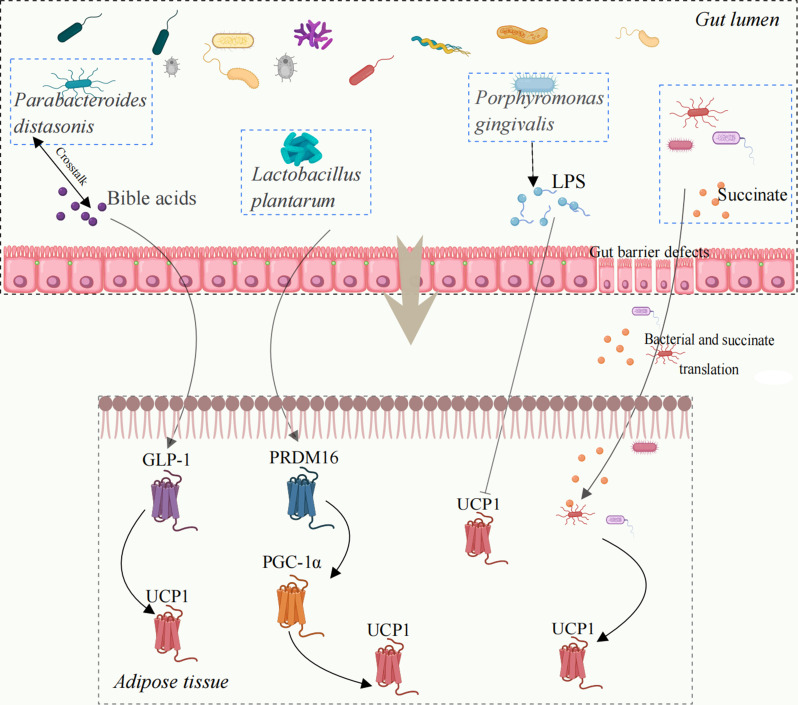
Fig1. The microbiota regulates the abundance of UCP1 in adipose tissue through microbiota metabolites. (Dihong Gong, 2024)
UCP1 Related Signaling Pathway
The UCP1 signaling pathway is crucial for generating heat and balancing energy in brown fat. It starts when norepinephrine, a hormone from the sympathetic nervous system, signals brown fat cells to produce more UCP1. This action breaks down fats, releasing free fatty acids that activate UCP1, allowing protons to pass through mitochondria and create heat, not store energy. Scientists are really interested in this pathway because understanding it better could help tackle obesity and metabolic issues by exploring how various hormones and molecules manage UCP1 activity.UCP1 Related Diseases
UCP1 is closely linked to how our bodies handle energy and fat, so it's no surprise that it's connected to several health conditions. When UCP1 doesn't work properly or is less active, it might lead to obesity since the body struggles to burn off excess calories as heat. This inefficiency can also contribute to obesity-related issues, like type 2 diabetes and metabolic syndrome, where the body's energy regulation goes awry. On the flip side, having an overactive UCP1, while less common, could impact body weight and energy balance, potentially leading to drastic weight loss or temperature regulation problems. Researchers are exploring these connections to see if boosting or modulating UCP1 activity could be a way to treat or manage these diseases effectively.Bioapplications of UCP1
UCP1 plays a big role in how our bodies manage energy and heat, which makes it a target for some intriguing real-world applications, especially in the fight against obesity and related disorders. Researchers are exploring ways to tap into UCP1’s ability to burn calories for heat to potentially boost metabolic rate and aid in weight control. This could pave the way for new obesity treatments. Plus, a deeper understanding of how UCP1 works could help develop ways to address issues like temperature regulation and cold sensitivity. Exploring UCP1's function might also offer fresh insights into how our bodies adjust to different energy demands, contributing to better strategies for maintaining metabolic health.Case Study
Case Study 1: Kang Y. et al. Nature. 2023
Uncoupling protein 1 (UCP1) channels protons to generate heat instead of ATP. It's activated by fatty acids and DNP but inhibited by ATP. UCP1 structures reveal a cavity open to the cytosol where both DNP and ATP bind. When ATP binds, it changes UCP1's shape, making it more compact and blocking DNP’s function. This overlap means ATP stops UCP1's proton activity, highlighting its regulatory role.-
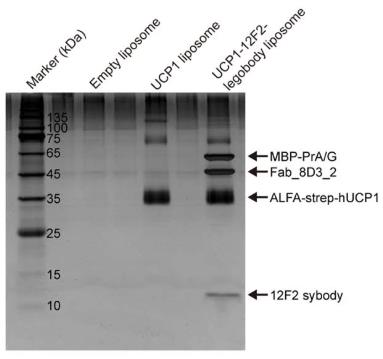 Fig1. Sliver stained SDS-PAGE of detergent-solubilized liposomes.
Fig1. Sliver stained SDS-PAGE of detergent-solubilized liposomes. -
 Fig2. 2D-class averages of UCP1-12F2-legobody in the nucleotide-free state.
Fig2. 2D-class averages of UCP1-12F2-legobody in the nucleotide-free state.
Case Study 2: Jacobsen L. et al. J Phys Chem B. 2023
UCP1, found in brown fat, helps burn energy as heat by letting protons leak across the mitochondrial membrane. This process can fight obesity. While researchers know ATP can block this leak, how it starts and where fatty acids activate it are still unclear. Using simulations, they outlined UCP1’s shape and predicted how it functions: R277 stabilizes ATP to stop the leak and steps in for missing protons, ATP binds with R84, R92, R183, and S88, R92 moves ATP to the right spot, ATP changes certain lysines to block proton flow, and fatty acids might attach at specific sites in UCP1.-
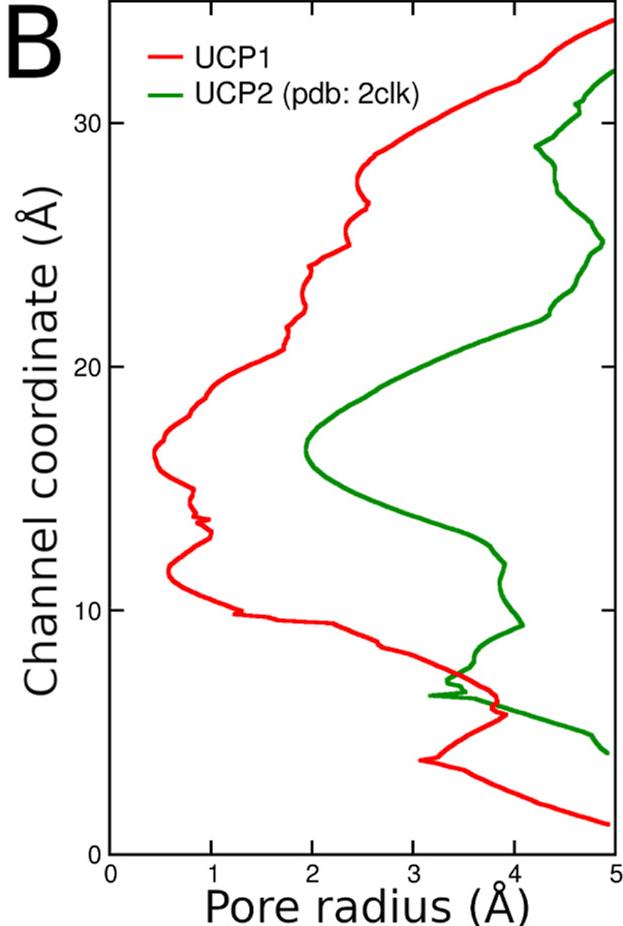 Fig3. Pore radius along the protein cavity in the UCP1 model (red) and experimental UCP2 structure (green).
Fig3. Pore radius along the protein cavity in the UCP1 model (red) and experimental UCP2 structure (green). -
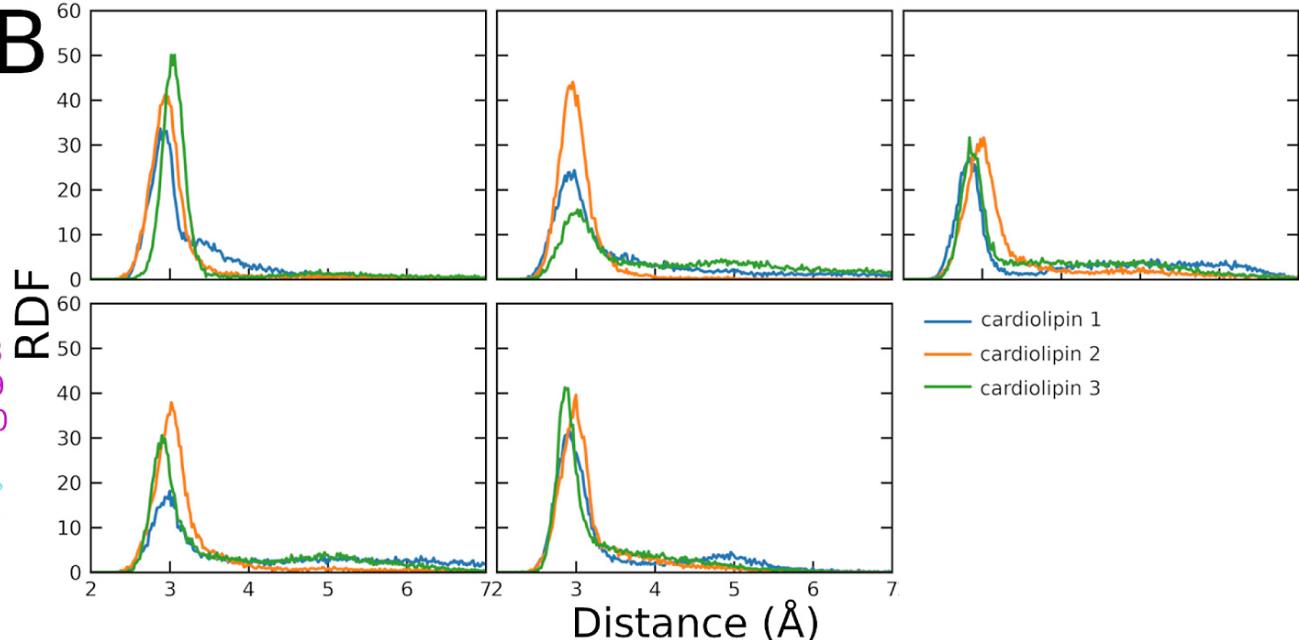 Fig4. Radial distribution functions (RDFs) of phosphate atoms.
Fig4. Radial distribution functions (RDFs) of phosphate atoms.
Quality Guarantee
High Purity
-
.jpg) Fig1. SDS-PAGE (UCP1-27R)
Fig1. SDS-PAGE (UCP1-27R) -
.jpg) Fig2. SDS-PAGE (UCP1-28R)
Fig2. SDS-PAGE (UCP1-28R)
Involved Pathway
UCP1 involved in several pathways and played different roles in them. We selected most pathways UCP1 participated on our site, such as PPAR signaling pathway,Huntingtons disease, which may be useful for your reference. Also, other proteins which involved in the same pathway with UCP1 were listed below. Creative BioMart supplied nearly all the proteins listed, you can search them on our site.
| Pathway Name | Pathway Related Protein |
|---|---|
| Huntingtons disease | POLR2J3,NDUFA2,TRP53,ATP5G3,HDAC2,UQCR11,NDUFA5,DCTN2,NDUFA8,SOD2 |
| PPAR signaling pathway | CYP4A12A,ACSL1,FABP6,SCP2,ACADL,RXRG,RXRGA,APOA1A,OLR1,ADIPOQB |
-
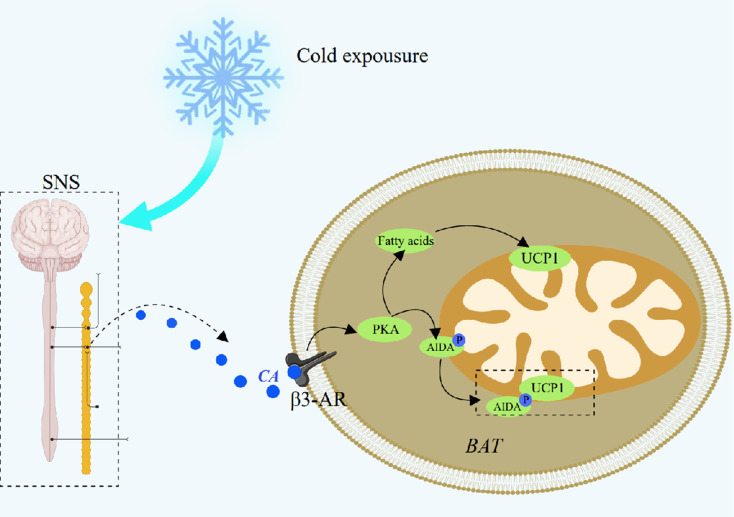 Fig1. The partial mechanisms by which cold exposure activates UCP1. (Dihong Gong, 2024)
Fig1. The partial mechanisms by which cold exposure activates UCP1. (Dihong Gong, 2024) -
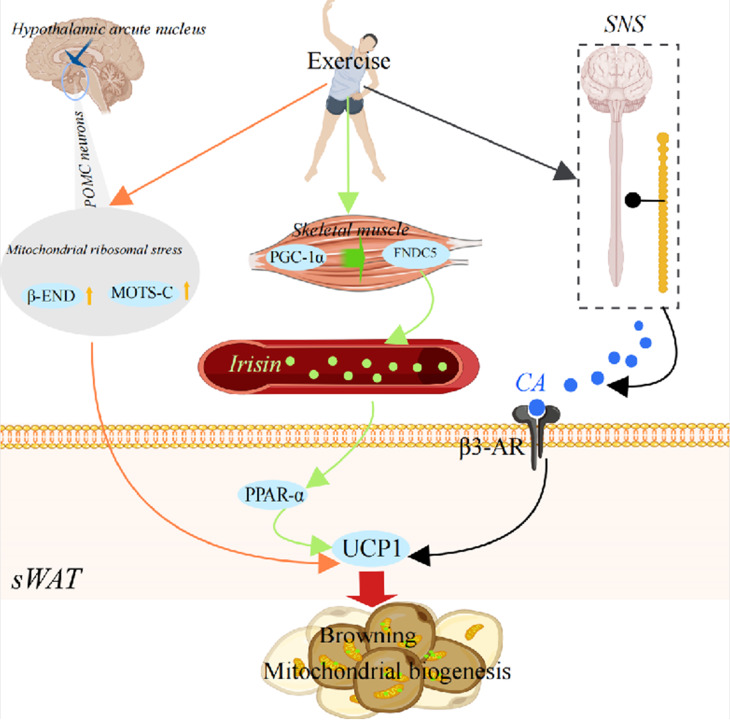 Fig2. The partial mechanisms by which physical exercise upregulates and activates UCP1. (Dihong Gong, 2024)
Fig2. The partial mechanisms by which physical exercise upregulates and activates UCP1. (Dihong Gong, 2024)
Protein Function
UCP1 has several biochemical functions, for example, oxidative phosphorylation uncoupler activity. Some of the functions are cooperated with other proteins, some of the functions could acted by UCP1 itself. We selected most functions UCP1 had, and list some proteins which have the same functions with UCP1. You can find most of the proteins on our site.
| Function | Related Protein |
|---|---|
| oxidative phosphorylation uncoupler activity | UCP3 |
Interacting Protein
UCP1 has direct interactions with proteins and molecules. Those interactions were detected by several methods such as yeast two hybrid, co-IP, pull-down and so on. We selected proteins and molecules interacted with UCP1 here. Most of them are supplied by our site. Hope this information will be useful for your research of UCP1.
Resources
Related Services
Related Products
References
- Brestoff, JR; Kim, BS; et al. Group 2 innate lymphoid cells promote beiging of white adipose tissue and limit obesity. NATURE 519:242-+(2015).
- Maimaitiyiming, H; Norman, H; et al. CD47 Deficiency Protects Mice From Diet-induced Obesity and Improves Whole Body Glucose Tolerance and Insulin Sensitivity. SCIENTIFIC REPORTS 5:-(2015).


